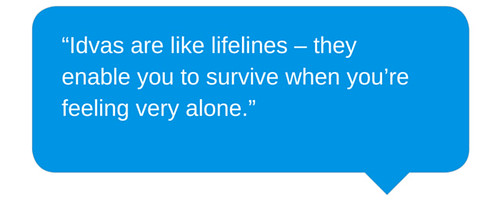14th December 2015
HMIC's report is encouraging, but there is still work to be done
Last year, the police in England and Wales received 900,000 calls about domestic abuse. That’s 100 an hour.
One in three of all recorded assaults are domestic abuse-related.
And these are the reported incidents. We all know there are a huge number of victims who remain hidden.
I founded SafeLives ten years ago; yet I am still not used to reading statistics like this. They remain stubbornly and depressingly static.
However, the report published today by Her Majesty’s Inspectorate of Constabulary (HMIC) about the police response to domestic abuse is encouraging. HMIC found a 31% increase in the number of domestic abuse crimes being recorded across England and Wales in the last year – a marked shift in the response. By showing themselves to be increasingly committed to recording crimes properly, the police not only help to inform our understanding of the problem – they also reinforce the fact that domestic abuse is a crime and must be treated as such.
Attitudes have also improved, with frontline officers moving towards being more supportive and sympathetic to victims. Of course, this personal response is dependent on the area, dependent on the individual. Improvements are been found in forces where they have conducted extensive training – something we hope will be rolled out to every police force.
We welcome this progress. However, to better support victims, we must deal with the root of the problem: the perpetrator. It is clear that the police are still failing to challenge abusive behaviour. Victims must be supported, they must be made safe. But to deal with the problem sustainably, we must have fewer perpetrators.
Our data shows 55% of victims have experienced some form of abuse previously and that many perpetrators do it time and time again. The report reflects the national narrative – support the victim and get them away from the perpetrator. This is clearly the most immediate priority, but if we continue to fail to challenge perpetrators – we will never see a reduction in the number of victims. Today less than 1% of perpetrators get any specialist intervention to change their behaviour and prevent them from moving on to future abuse victims. A quarter (24%) of known perpetrators are thought to be repeat offenders; the cycle of abuse can only stop when we make perpetrators stop. We need the police to be at the forefront of this challenge.
The victim becomes safe, and yet the perpetrator is free to find another partner, another potential victim. We at SafeLives want to work with the police to see an increase in the number of perpetrators being prosecuted, the number of perpetrators being challenged to change.
This is not an either/or situation – holding the perpetrator accountable should happen in addition to, and never at the expense of, keeping a victim safe.
Perpetrators are the cause of domestic abuse. Without dealing with the root of the problem, we will continue to see more victims harmed, injured and murdered. We look forward to working with the police to make this happen. Holding perpetrators to account is a challenge, and not without its controversies, but we must be brave and face it head on.



